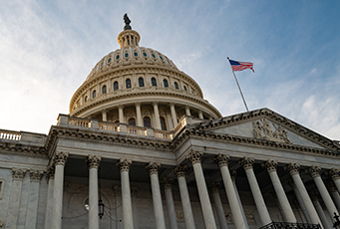If you are over age 60, you probably spent a few thousand dollars or less for your wedding, including all the trimmings. Today, couples and their parents may spend ten times that amount! It’s a special occasion, so if you are anticipating a wedding, plan ahead for the financial impact.
If you are in the planning stages for a wedding, you may be shocked by the costs. For this reason, it is important to get all the questions regarding who is providing the financial resources and how much is available before the planning begins. With this knowledge, a budget can be created and appropriate decisions made.
What Do People Spend?
According to the Cost of Wedding website, on a national basis, people spend an average of $26,444 on weddings. However, costs vary, depending on a variety of reasons including geographic location. The most expensive weddings are in places like New York and Chicago and range from $50,000 to $80,000. These costs represent every aspect of the wedding, including the venue, food, invitations, transportation, etc., but not the honeymoon.
Obviously, the number of guests has the greatest impact. Hoosiers in central Indiana with a guest list of 100 to 200 spend anywhere from $18,000 to $47,000, according to the data. Despite these high price tags, research shows that 40% of Americans spend less that $10,000.
The average cost of weddings does increase each year. In the past five years, spending has gone up by more than $5,500! This is important to keep in mind when saving for a future wedding.
For more information about the actual spending in your geographic area, go to www.CostofWedding.com and enter your zip code.
It’s all Your Choice!
Remember that all the money spent on a wedding is based on choices made. The only required cost is a marriage license, which is about $20 in Indiana!
To be more economical, you can get married on a day other than Saturday. This generally reduces the venue costs as does choosing a date in months other can June and December. You can also control the costs by planning a buffet or simply serving heavy appetizers at the reception instead of a sit-down meal; limiting or eliminating the alcoholic beverages available; and renting a DJ versus a band for entertainment and dancing.
Another option, though it may be hard to do, is reducing the number of invited guests, which will obviously lower the overall price tag of a wedding. Experts estimate that today the overall average cost per wedding guest is $237 nationally. In central Indiana, the range is about $140 to $170.
Researching via the Internet can provide great ideas as well as additional ways to reduce costs and ensure you are getting the best pricing on invitations, flowers, party favors, catering, etc.
Who Pays for this Special Occasion?
Traditionally, the bride’s parents fund a majority of the wedding costs, while the groom’s parents pay for the rehearsal dinner and perhaps some or all of the honeymoon expenses. While this still holds somewhat true, today it is not unusual to see the couple paying more, especially if they are marrying after living on their own for many years. In fact, 12% of couples in 2015 paid for their entire wedding and only 9% did not contribute anything.
The current breakdown, according to the data, includes the bride’s parents contributing an average of 44% of the overall budget, the bride and groom paying for 43%, and the groom’s parents covering 12%.
How Much? Dilemma for Parents
As parents you are likely torn between what you can afford and your desire to make the occasion special for your children. Because of this, it is important to determine upfront a reasonable amount to provide. This should be an amount that will not jeopardize your own future financial well being and considers such obligations for other children. The earlier you determine your contribution and start a systematic savings plan, the better. Don’t wait until an engagement announcement to begin setting money aside!
The parents’ contribution should also be clearly communicated to the bride and groom. This allows them to make the choices necessary to stay within their budget. In fact, giving the couple the lump sum amount and letting them chose how to spend it, can take away all the painful money conversations as the wedding planning process moves forward. And, it also gives the couple the option of spending less for the wedding and using the funds for a honeymoon or even putting it aside for a future home purchase.
Summary
Since the cost of weddings has been on the rise in recent years, be sure to begin planning early. Creating a budget, researching options, and making choices that celebrate the day, but don’t break the bank, is the best advice!
Recommended Articles
“Trump Accounts”: A Family’s Guide to One Big Beautiful Opportunity
Trump Accounts are part of the OBBB and designed to...





